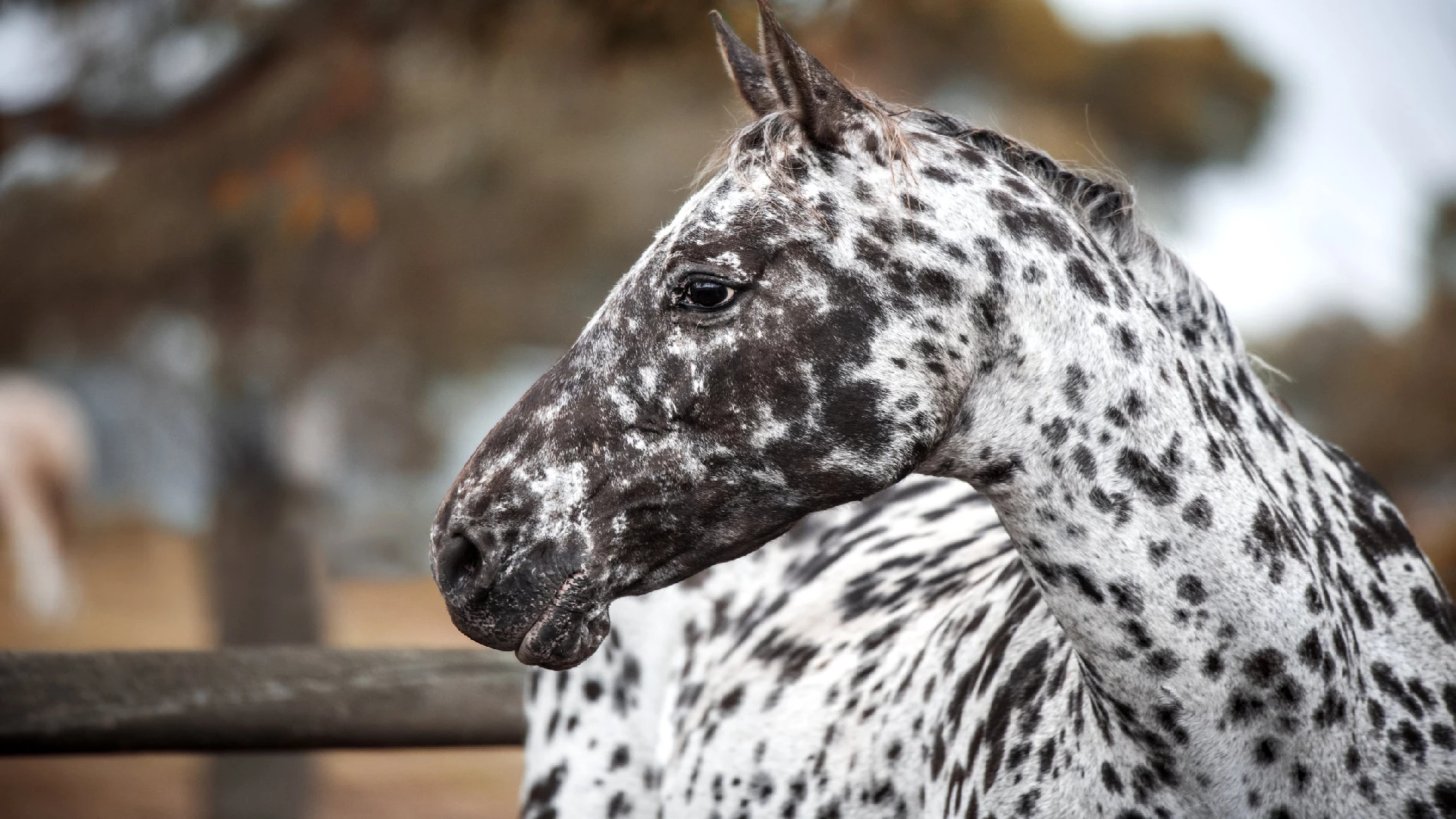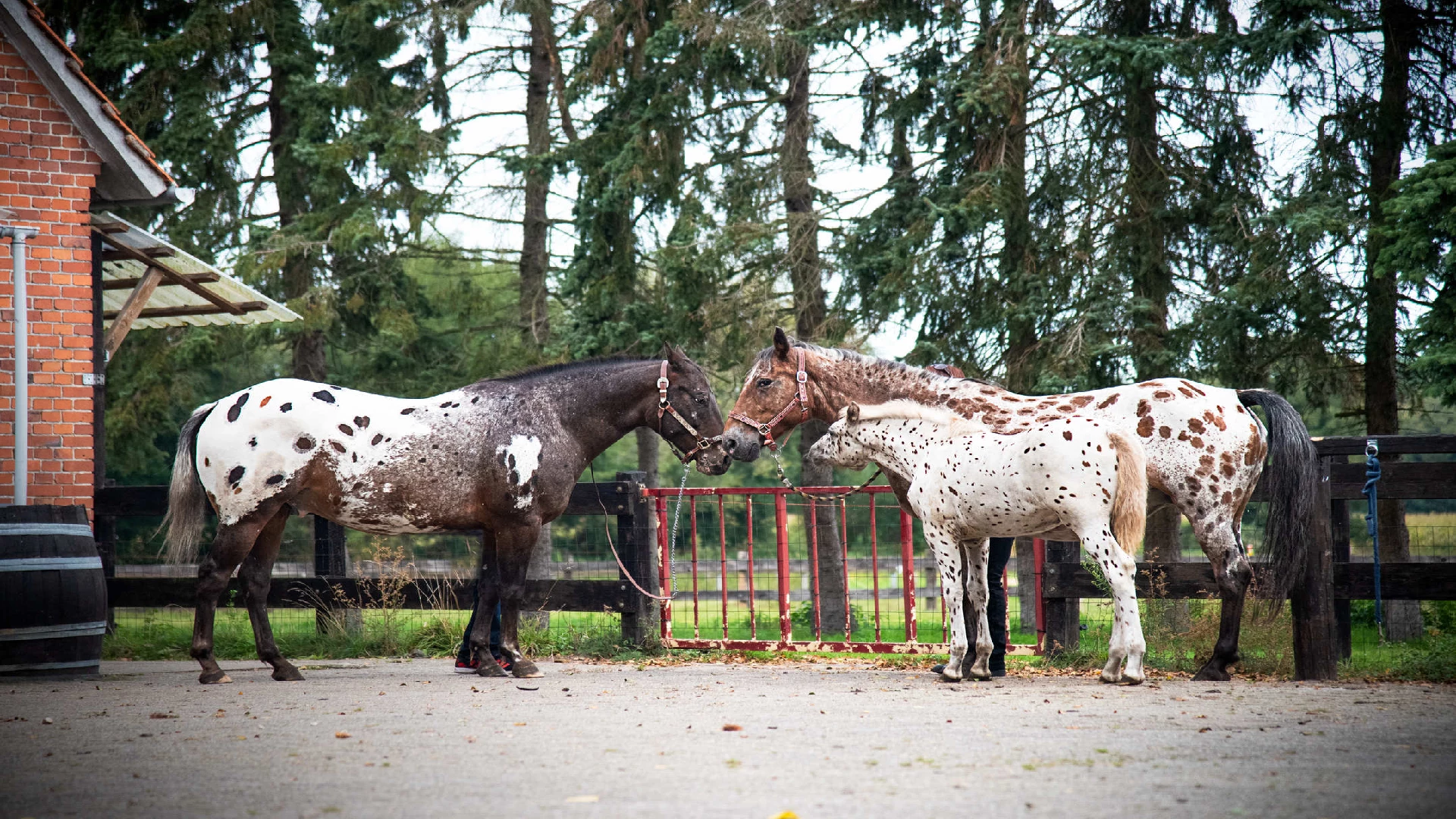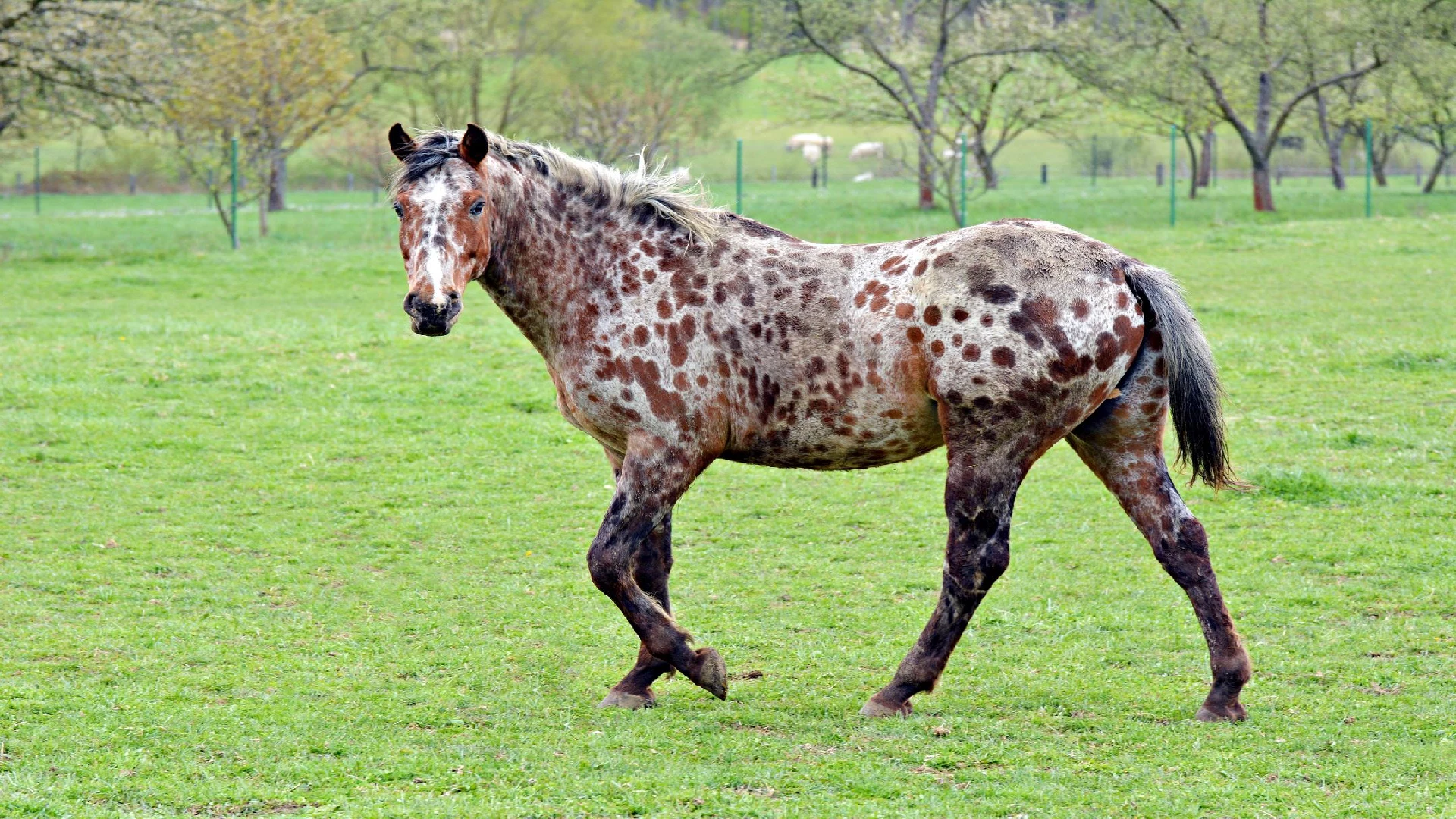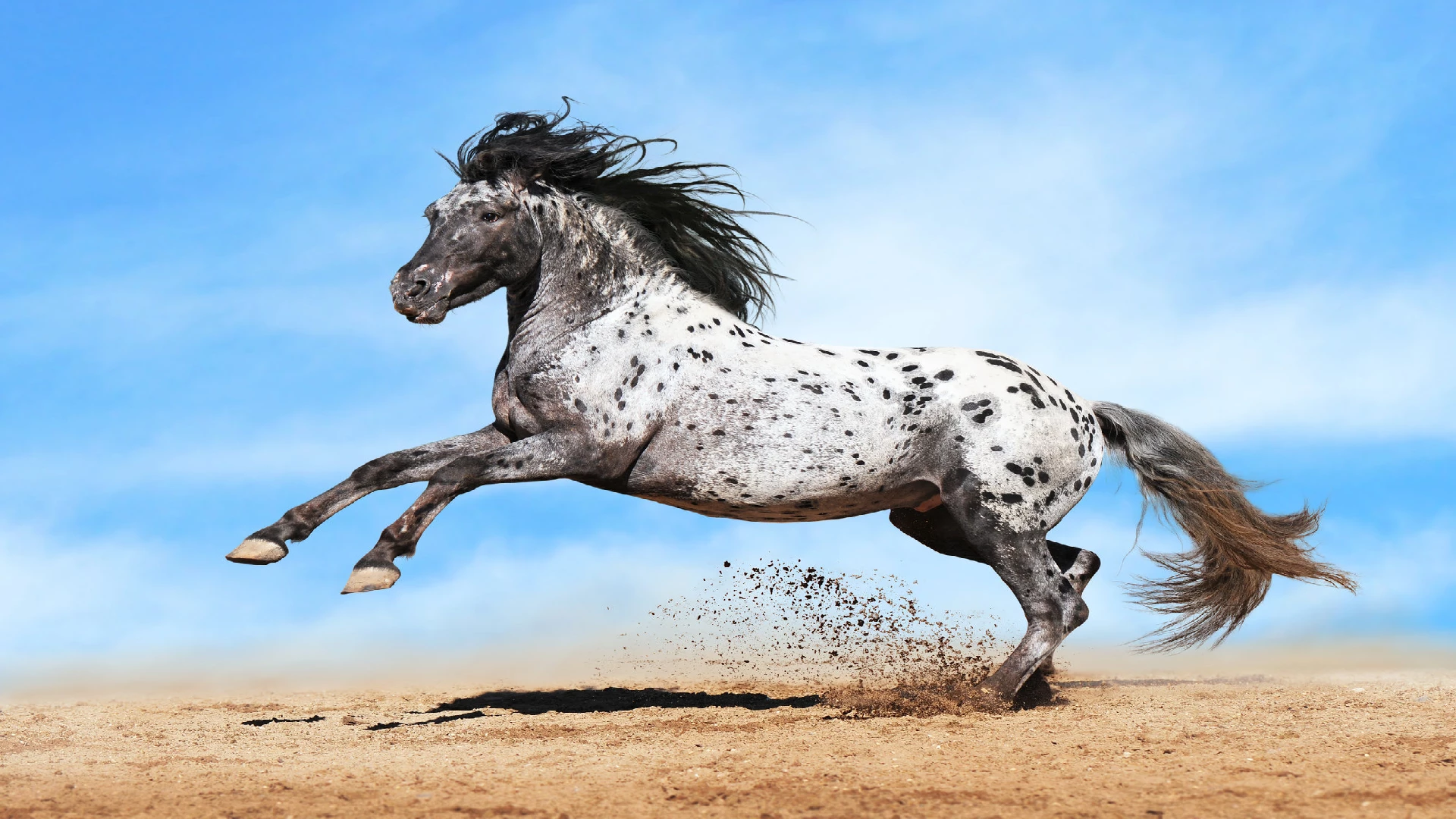If you’ve ever laid eyes on an Appaloosa horse, you probably couldn’t help but be captivated by their unique coat patterns and striking appearance. These horses are often described as living works of art, their coats resembling abstract paintings more than anything else. But what’s the secret behind these remarkable patterns? In this blog post, we’re diving headfirst into the world of Appaloosa genetics to unravel the fascinating mysteries that make these horses so distinctive.
Gallop into a New Adventure 🐎🌟
1. The Mystery Behind Spots
 Appaloosas are known for their distinctive coat patterns, which often feature spots, speckles, and splotches of color. But have you ever wondered why some Appaloosas have more pronounced spots than others? It all comes down to their genetic makeup.
Appaloosas are known for their distinctive coat patterns, which often feature spots, speckles, and splotches of color. But have you ever wondered why some Appaloosas have more pronounced spots than others? It all comes down to their genetic makeup.
2. The LP Gene
 The leopard complex, represented by the LP gene, is the key player in creating those mesmerizing spots on Appaloosas. The LP gene is responsible for regulating the distribution of pigments in their coats. This gene comes in various forms, each influencing the coat pattern in a unique way.
The leopard complex, represented by the LP gene, is the key player in creating those mesmerizing spots on Appaloosas. The LP gene is responsible for regulating the distribution of pigments in their coats. This gene comes in various forms, each influencing the coat pattern in a unique way.
3. Base Coat Colors
 Appaloosa horses can have a range of base coat colors, including bay, black, chestnut, and more. The LP gene interacts with these base colors to create the intricate patterns we admire. For instance, a bay Appaloosa with the LP gene may develop a bay coat with white spots.
Appaloosa horses can have a range of base coat colors, including bay, black, chestnut, and more. The LP gene interacts with these base colors to create the intricate patterns we admire. For instance, a bay Appaloosa with the LP gene may develop a bay coat with white spots.
4. Color Variations
 It’s not just the spots that make Appaloosas unique; it’s also the various color variations they exhibit. These include:
It’s not just the spots that make Appaloosas unique; it’s also the various color variations they exhibit. These include:
Blanket: A white blanket typically covers the hindquarters of the horse, while the rest of the body remains a solid color.
Leopard: Large, scattered spots cover the entire body, giving the horse an exotic appearance.
Roan: Roaning creates a mingling of white hairs with the base coat color, producing a marbled effect.
5. Understanding Inheritance
 The inheritance of Appaloosa coat patterns can get a bit tricky. It’s governed by a combination of dominant and recessive genes, and two Appaloosa parents can produce foals with a range of coat patterns. Here’s a simplified breakdown:
The inheritance of Appaloosa coat patterns can get a bit tricky. It’s governed by a combination of dominant and recessive genes, and two Appaloosa parents can produce foals with a range of coat patterns. Here’s a simplified breakdown:
Homozygous: If both parents carry two copies of the LP gene (LP/LP), their foal will almost certainly inherit Appaloosa characteristics.
Heterozygous: When only one parent carries the LP gene (LP/lp), there’s a 50% chance of the foal inheriting Appaloosa characteristics.
Homozygous for non-LP: If both parents lack the LP gene (lp/lp), their foal will not display Appaloosa characteristics.
6. The Role of the PATN1 Gene
 While the LP gene is the star of the show, the PATN1 gene also plays a crucial role in shaping the Appaloosa coat pattern. This gene influences the size and distribution of white areas on the horse’s body, further contributing to the variety of patterns we observe.
While the LP gene is the star of the show, the PATN1 gene also plays a crucial role in shaping the Appaloosa coat pattern. This gene influences the size and distribution of white areas on the horse’s body, further contributing to the variety of patterns we observe.
7. Spotting Patterns
 Appaloosa spots can appear in various patterns, and their diversity is a testament to the complexity of these genes. Some common spotting patterns include:
Appaloosa spots can appear in various patterns, and their diversity is a testament to the complexity of these genes. Some common spotting patterns include:
Snowflake: This pattern features small, scattered spots across the horse’s body, resembling snowflakes on a winter’s day.
Varnish roan: A gradual lightening of the base coat color over time, resulting in a roan-like effect.
Marbleized: This unique pattern combines the look of marbling with spots, creating an extraordinary visual.
8. Breeding for Appaloosa Patterns
 For breeders and Appaloosa enthusiasts, understanding the genetics behind these patterns is crucial. By selecting parents with specific genes and spotting patterns, breeders can work to produce Appaloosas with desired characteristics.
For breeders and Appaloosa enthusiasts, understanding the genetics behind these patterns is crucial. By selecting parents with specific genes and spotting patterns, breeders can work to produce Appaloosas with desired characteristics.
9. Beyond the Spots
 While Appaloosa coat patterns are undoubtedly captivating, these horses offer much more than just a pretty coat. They are known for their versatility, intelligence, and friendly disposition, making them excellent choices for a variety of equestrian disciplines.
While Appaloosa coat patterns are undoubtedly captivating, these horses offer much more than just a pretty coat. They are known for their versatility, intelligence, and friendly disposition, making them excellent choices for a variety of equestrian disciplines.
In conclusion, the genetics of Appaloosa horses are as diverse and enchanting as their coat patterns.
Understanding the role of genes like LP and PATN1 sheds light on how these magnificent creatures come to possess such unique and beautiful appearances. Whether you’re a horse enthusiast or simply someone who appreciates the beauty of nature, Appaloosas are a testament to the wonder of genetics in the animal kingdom. The next time you encounter one of these glamorous horses, you’ll have a deeper appreciation for the science that makes them so extraordinary. So, keep your eyes peeled for the enigmatic Appaloosa, a living masterpiece that never fails to leave a lasting impression.
Gallop into a New Adventure 🐎🌟










